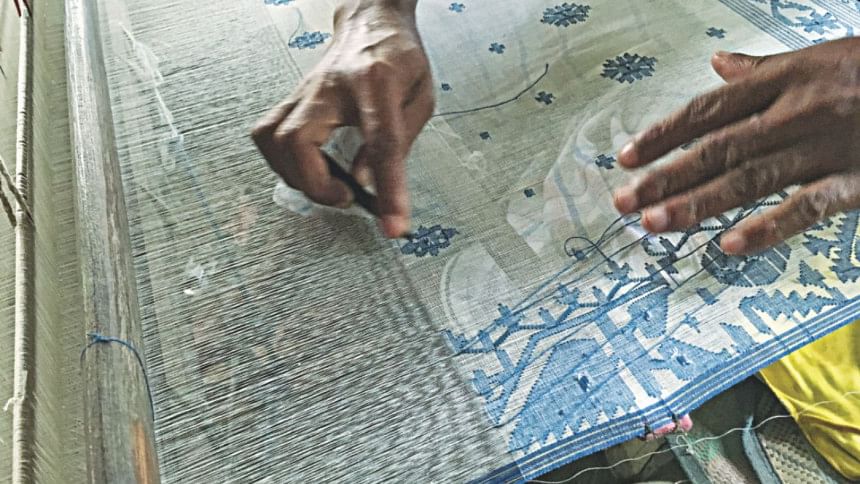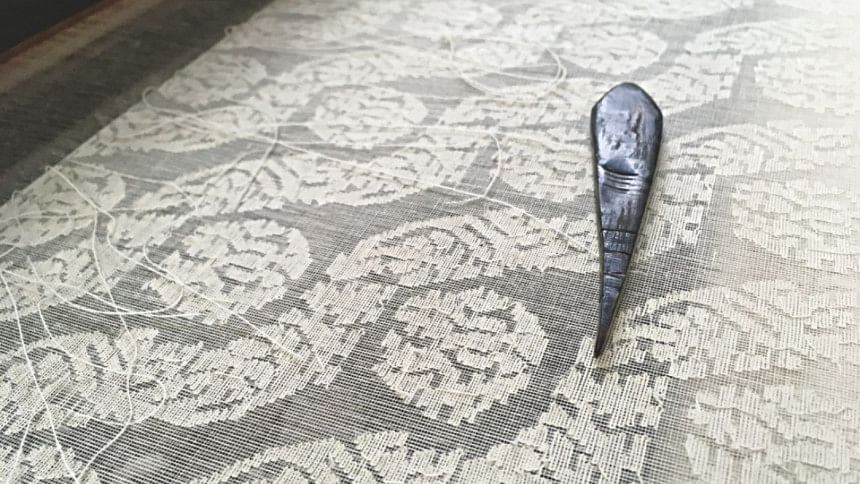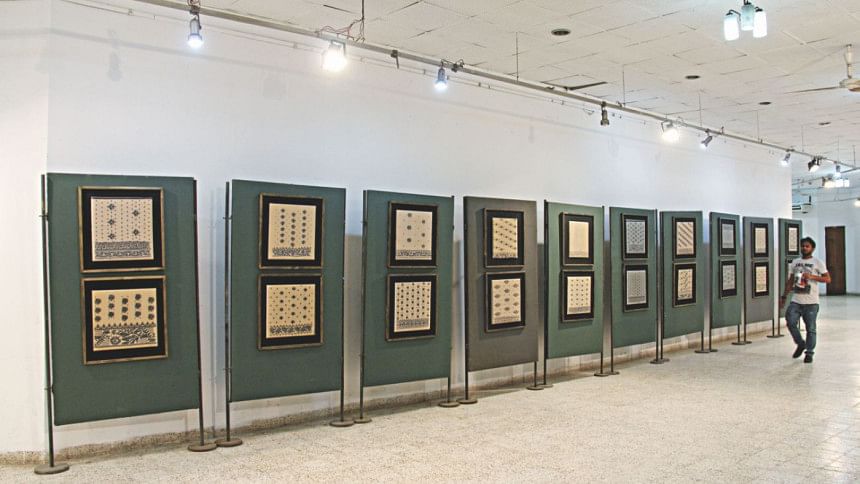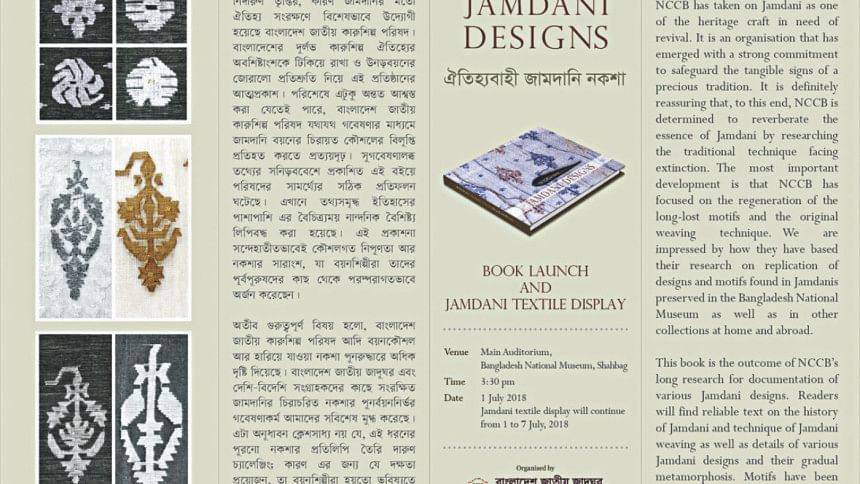The making of motifs

This non-fiction is a comprehensive documentation of the ancient Jamdani motifs, with introductions, sources, explanations, line drawings, images and anecdotes attached to them; making it a holy grail for design students, textile and fashion designers, artisans, weavers, researchers, fashion entrepreneurs and craft enthusiasts.
The weaving of Jamdani is a continuous aesthetic evolution. This tedious, labour intensive and time-consuming work requires artisans of highest skills. In today's world of fast-fashion, Jamdani is facing a gradual extinction. For various reasons, it is not financially rewarding for weavers any more. The demand for Jamdani saris has decreased over the years, being more frequently used for just occasional purposes. Besides, the master weavers are aging. On the other hand, the motifs are being erroneously altered, adulterated and modified to meet the needs of modern times. Hence, the original and quintessential motifs and designs are phasing out. In a situation like this, for Jamdani to regain and revive its decaying glory, two things are crucial: one is a sustainable economy and the other is ensuring the traditional way of hands-on learning between generations. This book plays a vital role in sustaining that craft, through identifying and documenting the motifs in their original forms. And at the same time, it also acts as a guiding light in redefining Jamdani for the twenty-first century fashion market.

What makes this book special is its portrayal of Jamdani motifs in their original forms – paar, buti, techri, jaal, chhita, anchal and haisha, all have been replicated from museum pieces or personal collections from Bangladesh and abroad by the NCCB - National Craft Council of Bangladesh - Bangladesh Jatiya Karushilpa Parishad, in samples specially woven by the master weavers. Jamdani motifs are one of a kind; hand-crafted with a spindle, weaved in the manner of embroidery, involving hands-on training from father to son or master to apprentice. The legacy is traditionally handed down from generation to generation through verbalised poem-like manuals. No form of documentation has been possible by the artisan families other than memorising the oral instructions from their forefathers, some of which are included in verbatim in the book. The local names associated with each motif, have also been included after a rigorous process of screening, authentication and validation.

"Traditional Jamdani Designs" is an initiative of NCCB, and has been jointly published by the Bangladesh National Museum and NCCB. One can roughly divide the book into three segments; the first segment has a vivid introduction to Jamdani as the heritage textile by Rubi Ghuznavi, accompanied by an article on Jamdani trade through history by Hameeda Hossain and the gradual evolution of Jamdani motifs and weaving techniques by Chandra Shekhar Shaha; the second segment, which is the heart of this book, comprises of three vital chapters: Jamdani's weaving process, a compilation of both traditional and contemporary designs, a catalogue of samples and line drawings of traditional motifs including a glossary of names of the motifs; the third segment is an appendix with the names, locations and contact details of accomplished Jamdani weavers who have been in the profession for generations. Also, eloquent images of weaving process, patterns and heirloom Jamdani saris have adorned the book all the way through.
From its inception, NCCB's mission has been to enable artisans to reach out to people with their art and products by creating greater appreciation of craft among the local and global audience. This book is the result of that very effort. The long and extensive research on Jamdani motifs that NCCB has undertook has been supported by the state department of the United States of America under the project "Prevention of Jamdani Motifs and Designs – an endangered handloom of Bangladesh". Veteran textile, craft and design specialist Chandra Shekhar Shaha had played the role of the lead researcher and design consultant, while craft and textile impresario Shahid Hussain Shamim had undertaken the responsibility of coordinating the project.

Jamdani, a craft rooted in history and adorned with pride, is of great social, cultural and economic importance. In 2013, UNESCO inscribed Bangladesh's Jamdani in the Representative List of Intangible Cultural Heritage of Humanity. To sustain Jamdani, it is crucial to preserve the traditional motifs. "This book is essentially a compendium of technical fitness and motifs that Jamdani weavers have inherited from their forefathers," says Faizul Latif Chowdhury, the former Director General of the Bangladesh National Museum in his forward of the book. He also mentioned the critical need of sustaining cultural heritage as it safeguards the identity of a nation and the cultural diversity of the world. "The continuation of artistic tradition depends on how the next generation of artisans are able to retain the artistic skills of their ancestors" – and this book would ensure precisely that, today and in the days to come.
Advertising professional, fashion and design consultant
Image source - Shahid Hussain Shamim, Former president: National Crafts Council of Bangladesh





Comments